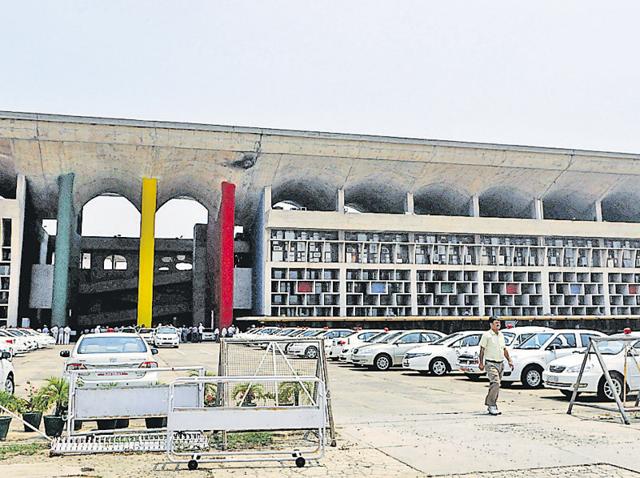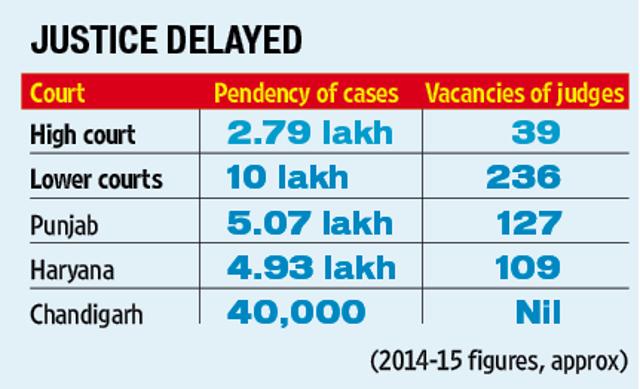With fewer judges, nearly 13 lakh cases pending in Punjab, Haryana
With the deadlock between the Centre and the Supreme Court over the National Judicial Appointments Commission (NJAC) on for over a year now, the Punjab and Haryana high court is one of the worst affected in terms of vacancies of judges.
Chandigarh

With the deadlock between the Centre and the Supreme Court over the National Judicial Appointments Commission (NJAC) on for over a year now, the Punjab and Haryana high court is one of the worst affected in terms of vacancies of judges.
The high court has 46 judges against the sanctioned 85, while three judges are scheduled to retire later this year and another seven in 2017. The number of vacancies in the high court is one of the five highest in the country.
In September 2014, the high court had got 12 new judges and the number had gone up to 59, which later fell owing to retirements and transfers. Only one or two judges could be added in 2015 as the Supreme Court and the Centre locked horns over the NJAC, being set up for the appointment of high court and Supreme Court judges. Since July 2014, the high court has been functioning without a regular chief justice after then chief justice Sanjay Kishan Kaul was transferred to the Madras high court.
The pendency of cases, which was already a staggering 2.97 lakh cases in 2014-15 is set to increase owing to shortage of judges and increased litigation. “This year, there will be an increase of more than what it was last year. More and more cases are being filed, but the disposal rate is not encouraging,” a top official said, adding that judges were so overburdened that the daily case listing before some benches went up to 100. The annual report on the state of affairs of the high court for 2015-16 is to be released later this year.
Situation also grim in lower courts
The situation is equally grim in the lower courts of Punjab, Haryana and Chandigarh, where the posts are sanctioned by respective governments in consultation with the high court. There are 19 sessions divisions in Punjab, 21 in Haryana and one in Chandigarh, a total of 41 sessions divisions. In Punjab the sanctioned strength is of 672 judges; there were 505 judges in 2014 and another 100 were added in 2015. In Haryana, there is a sanctioned strength of 644 judges; there were 485 of them in 2014 and another 100 were added in 2015. Chandigarh has all 30 posts of judges filled.
According to a report of 2014-15, the pendency in Haryana is 4.93 lakh cases and in Punjab 5.07 lakh cases. Chandigarh has 40,000 cases pending as per the report, with a total pendency of 10 lakh cases in the two states and the union territory.
“Filing of cases has gone up manifold, but recruitment of judges has not been done in proportion to it. The situation is grave more in lower courts. Not only vacancies of judges, but a holistic view of the problem needs to be taken to speed up the justice delivery system,” high court senior advocate RL Batta said.
Punjab advocate general Ashok Aggarwal said, “The strength of judges at all level needs to be increased. The present strength is not enough to clear the backlog and deal with the present inflow of cases. But I would not blame any particular government or institution. The system is to be blamed and corrective measures need to be taken by the government as well as courts.”
Haryana advocate general BR Mahajan said, “The vacancy of judges is one of the reasons behind the pendency. There are other issues as well. We need to think of the problem holistically, be it infrastructure or vacancies. All these issues require attention of the government and courts as well. Of the issue of vacancies in lower courts, it is the high court that has to fill them. As many as 119 posts were advertised, but only 50-odd suitable candidates were found.”






